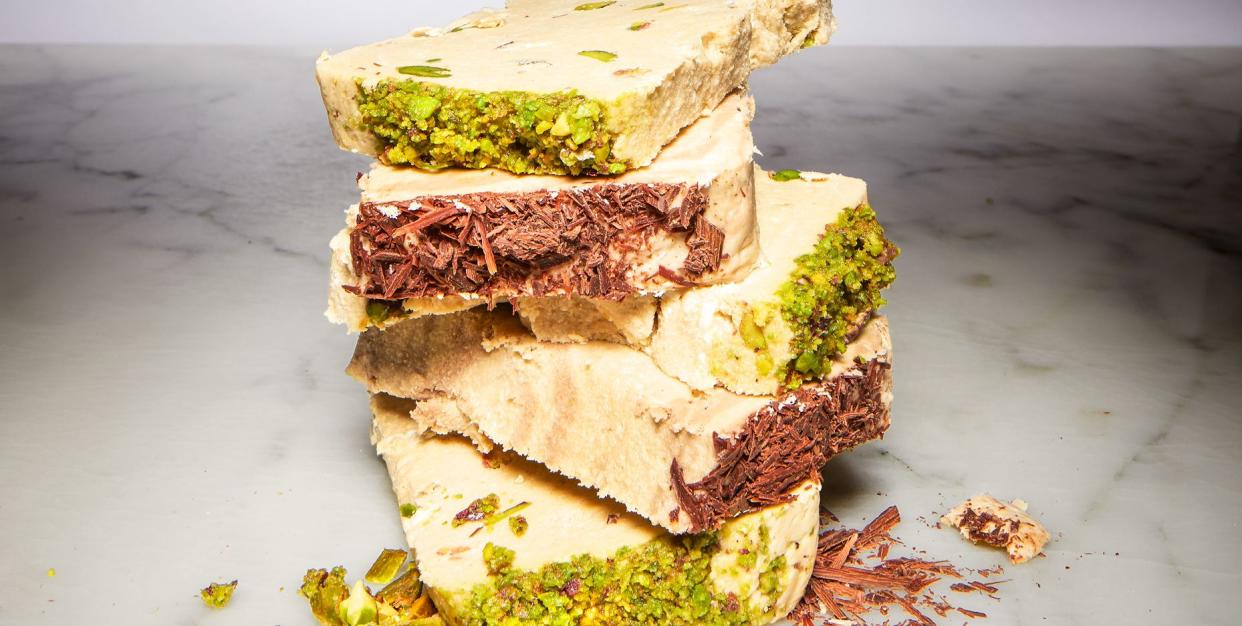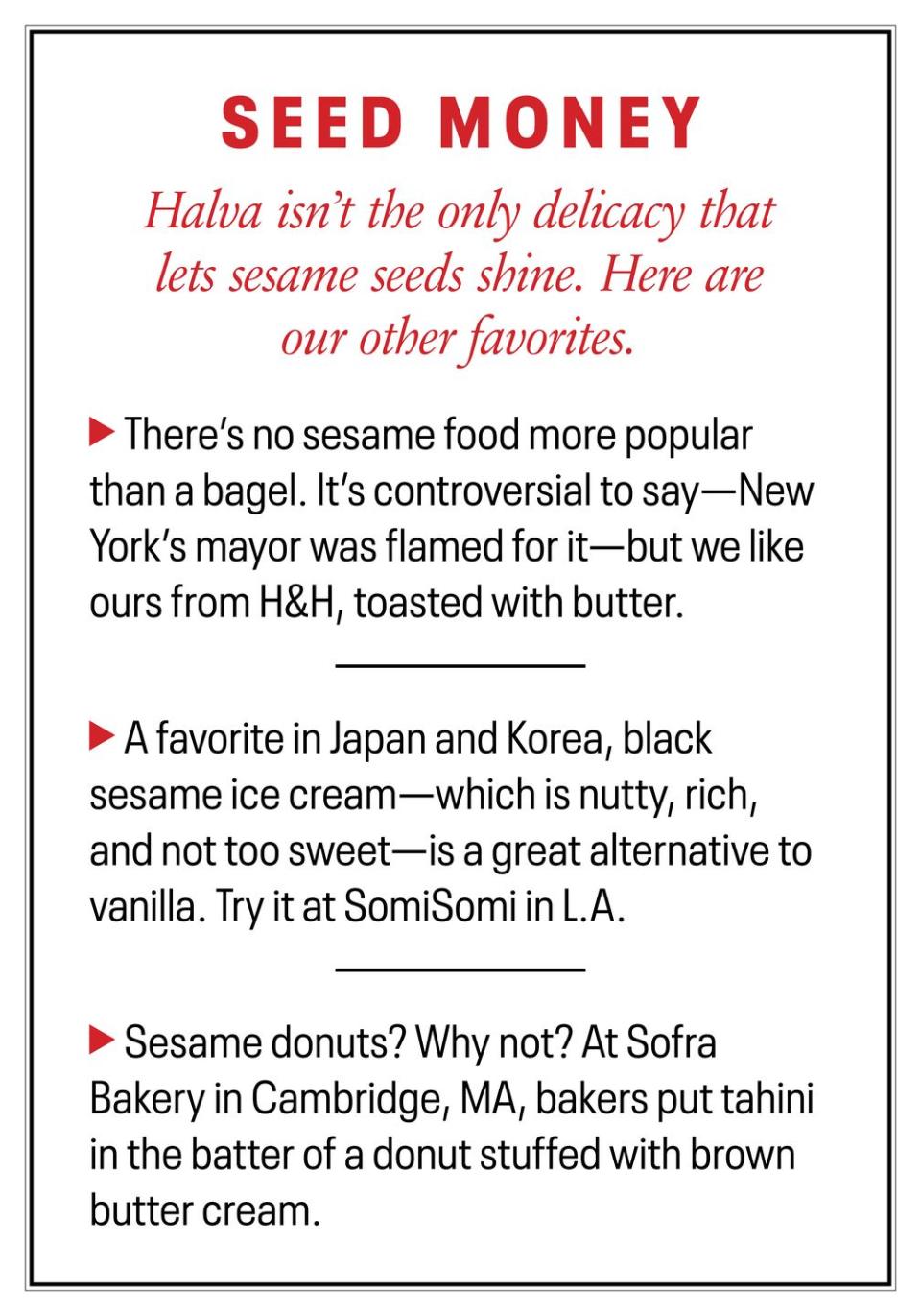Sesame Seed Halva Is the Candy You Didn't Know You Were Missing

Want candy that’s good for you? Consider halva. Made primarily from sesame seeds, the confection is an excellent source of minerals. (A cup of sesame seeds has more iron than a cup of broccoli.) There’s too much sugar to make it guilt-free, but that didn’t keep beauty maven Bobbi Brown from recently calling sesame-derived foods “a moisturizer for your insides.” That’s all very nice, but it is not the reason I have become addicted to Seed + Mill halva.
To be honest, it didn’t start well. My only previous experience with the candy was an encounter with the gritty commercial kind, which was like eating sweet sand. So when a friend excitedly offered me a bite of “this great new artisanal halva,” I demurred.
But she seemed so disappointed that I reluctantly had a taste. My mouth filled with a burst of sweetness that quickly segued into the nutty tang of sesame. Most astonishing of all was the way the candy’s dry flakiness slowly melted into a honeyish syrup and then magically evaporated. This whirlwind range of textures was such an exciting experience that I took another bite. And another.
Once you taste the real thing it’s easy to understand why the 16th-century Ottoman sultan Suleiman the Magnificent built a special kitchen dedicated to halva. (It was called the helvahane, or house of halva.) The sultan’s cooks were undoubtedly inspired by the ancient Arabic cookbook Kitab al-Tabikh, where the first known recipe appeared. The candy soon spread from the Ottoman Empire to the rest of the Middle East and on to India, Central Asia, and throughout the Mediterranean.
Halva arrived in the Americas at the turn of the last century; it was sold mostly in health food stores and Jewish emporiums. But when Seed + Mill co-owner Lisa Mendelson moved to the U.S. from Israel in 2013, she was so shocked by the quality of our halva that she began bringing some back from every trip home. When her friends Rachel Simons and Monica Molenaar tasted the candy, a lightbulb went on. “I’m a lawyer. I didn’t grow up thinking I’d be a halva entrepreneur,” Simons says. “But I love good food.” Before long the women were in business, and now they have a store in Manhattan’s Chelsea Market and a robust mail order business.

There are three key ingredients to their exceptional halva, which you can buy by the quarter-pound or in showstopper six-pound cakes. The first is intensely flavorful sesame seeds, which they get directly from Ethiopia. The second is the saponaria plant, the roots of which have the almost magical ability to turn other substances into foam. To make Seed + Mill’s halva, they stir a tiny amount of saponaria into sugar, which makes it froth, creating a meringue-like concoction without using eggs.
The final secret is not actually an ingredient, it’s that their halva is mixed by hand, in very small batches, to achieve that intriguing texture in a variety of flavors, including chocolate-orange, caramel, and, my favorite, pistachio.

It also happens that this ancient dessert is naturally vegan, putting it in line with one of today’s most prevalent food trends. “We didn’t know it,” Simons says, “but the plant-based community was looking for something creamy and satisfying to eat.” Aren’t we all?
This story appears in the May 2020 issue of Town & Country.
You Might Also Like

